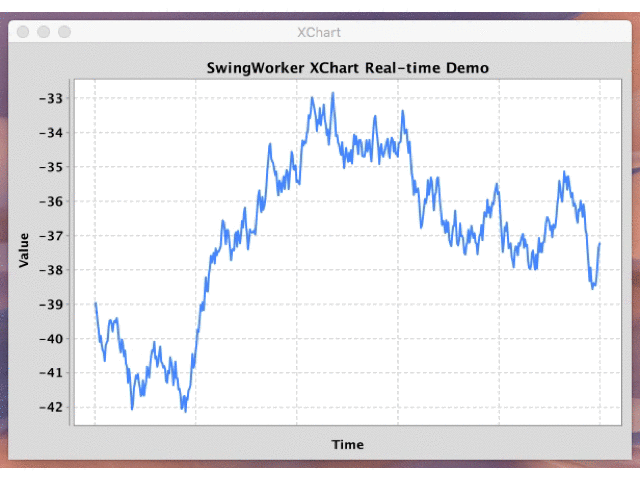I have an application which updates a variable about between 5 to 50 times a second and I am looking for some way of drawing a continuous XY plot of this change in real-time.
Though JFreeChart is not recommended for such a high update rate, many users still say that it works for them. I've tried using this demo and modified it to display a random variable, but it seems to use up 100% CPU usage all the time. Even if I ignore that, I do not want to be restricted to JFreeChart's ui class for constructing forms (though I'm not sure what its capabilities are exactly). Would it be possible to integrate it with Java's "forms" and drop-down menus? (as are available in VB) Otherwise, are there any alternatives I could look into?
EDIT: I'm new to Swing, so I've put together a code just to test the functionality of JFreeChart with it (while avoiding the use of the ApplicationFrame class of JFree since I'm not sure how that will work with Swing's combo boxes and buttons). Right now, the graph is being updated immediately and CPU usage is high. Would it be possible to buffer the value with new Millisecond() and update it maybe twice a second? Also, can I add other components to the rest of the JFrame without disrupting JFreeChart? How would I do that? frame.getContentPane().add(new Button("Click")) seems to overwrite the graph.
package graphtest;
import java.util.Random;
import javax.swing.JFrame;
import org.jfree.chart.ChartFactory;
import org.jfree.chart.ChartPanel;
import org.jfree.chart.JFreeChart;
import org.jfree.chart.axis.ValueAxis;
import org.jfree.chart.plot.XYPlot;
import org.jfree.data.time.Millisecond;
import org.jfree.data.time.TimeSeries;
import org.jfree.data.time.TimeSeriesCollection;
public class Main {
static TimeSeries ts = new TimeSeries("data", Millisecond.class);
public static void main(String[] args) throws InterruptedException {
gen myGen = new gen();
new Thread(myGen).start();
TimeSeriesCollection dataset = new TimeSeriesCollection(ts);
JFreeChart chart = ChartFactory.createTimeSeriesChart(
"GraphTest",
"Time",
"Value",
dataset,
true,
true,
false
);
final XYPlot plot = chart.getXYPlot();
ValueAxis axis = plot.getDomainAxis();
axis.setAutoRange(true);
axis.setFixedAutoRange(60000.0);
JFrame frame = new JFrame("GraphTest");
frame.setDefaultCloseOperation(JFrame.EXIT_ON_CLOSE);
ChartPanel label = new ChartPanel(chart);
frame.getContentPane().add(label);
//Suppose I add combo boxes and buttons here later
frame.pack();
frame.setVisible(true);
}
static class gen implements Runnable {
private Random randGen = new Random();
public void run() {
while(true) {
int num = randGen.nextInt(1000);
System.out.println(num);
ts.addOrUpdate(new Millisecond(), num);
try {
Thread.sleep(20);
} catch (InterruptedException ex) {
System.out.println(ex);
}
}
}
}
}

